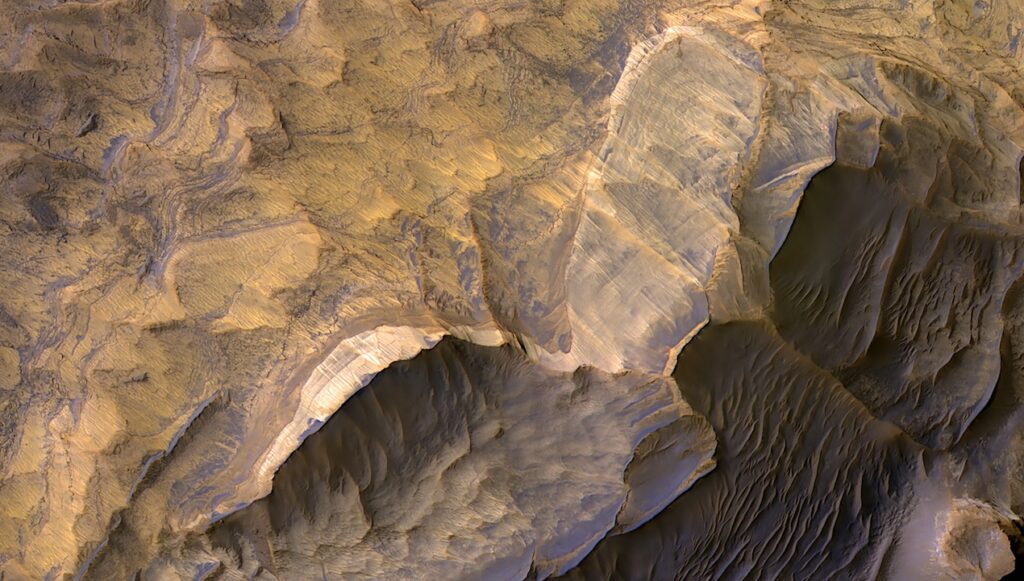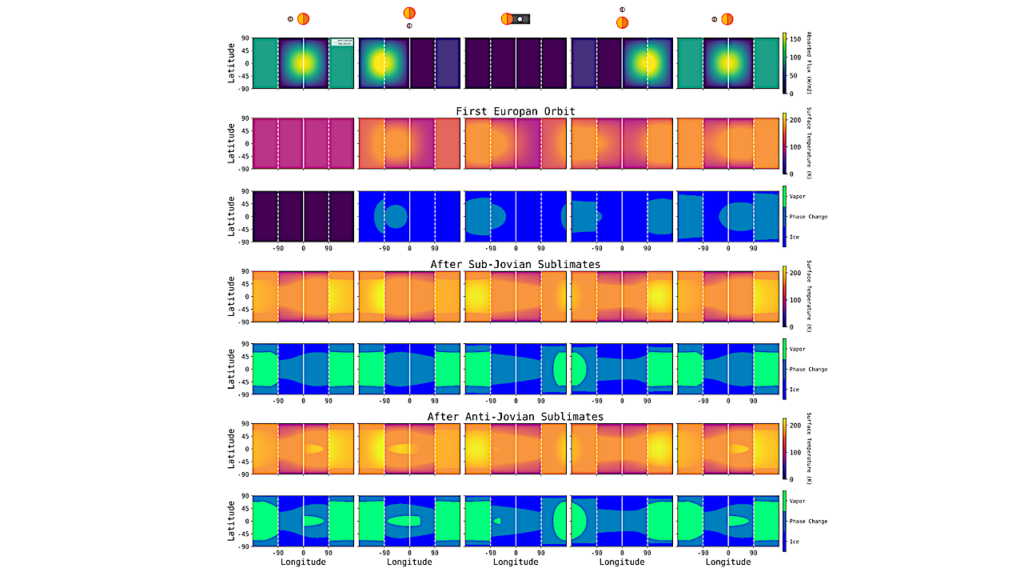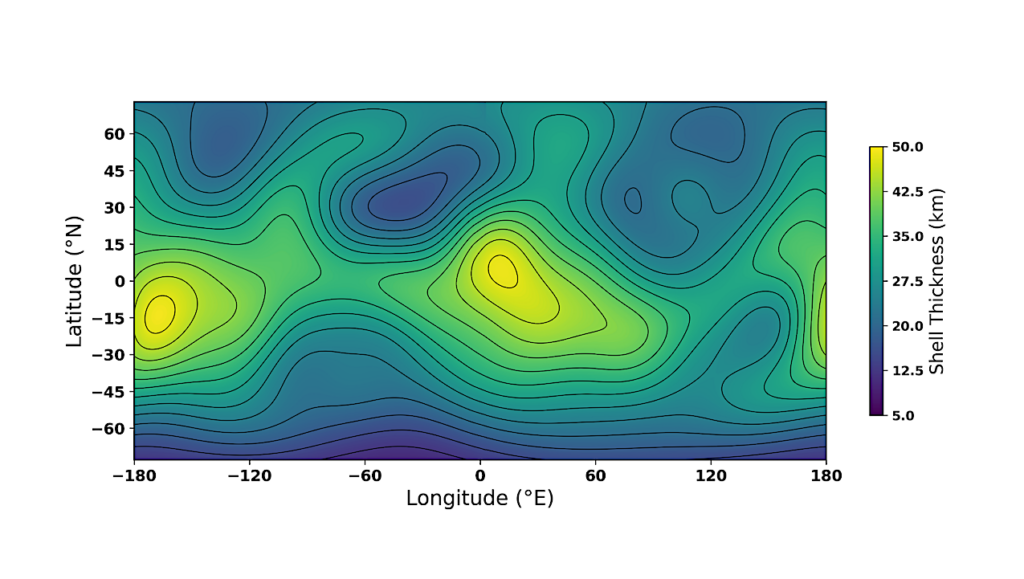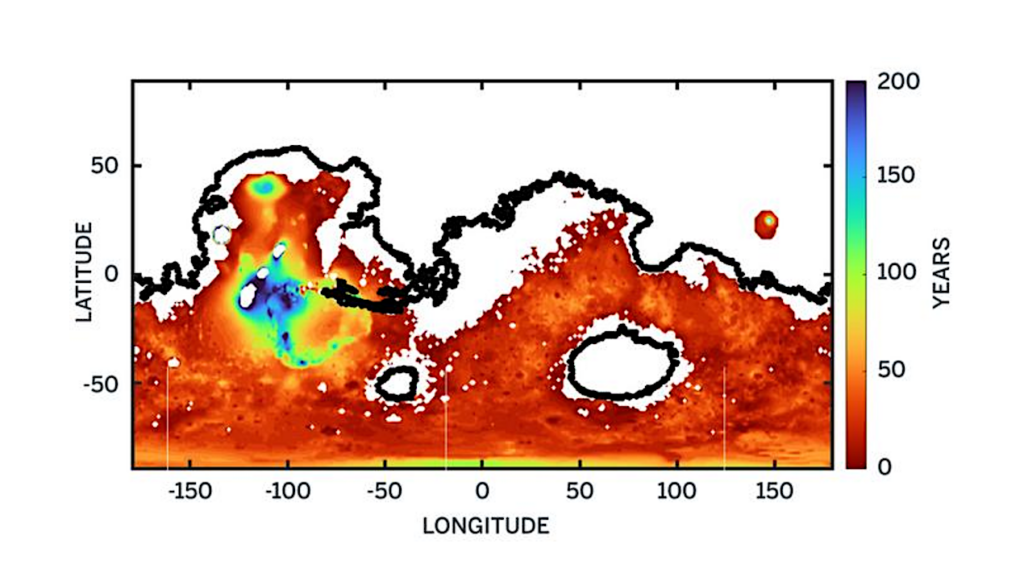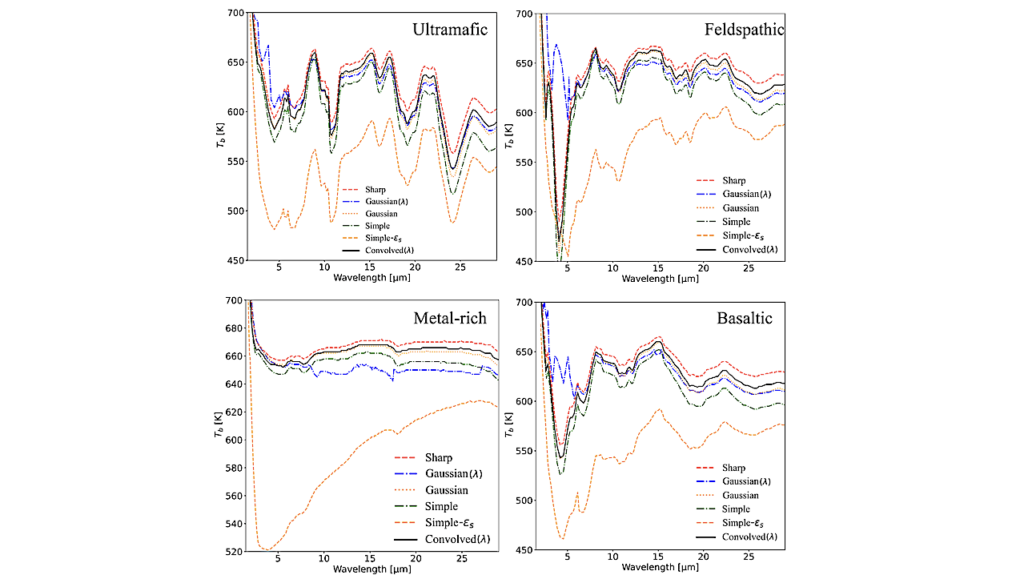Probing Ganymede’s Atmosphere With HST Lyα Images In Transit Of Jupiter
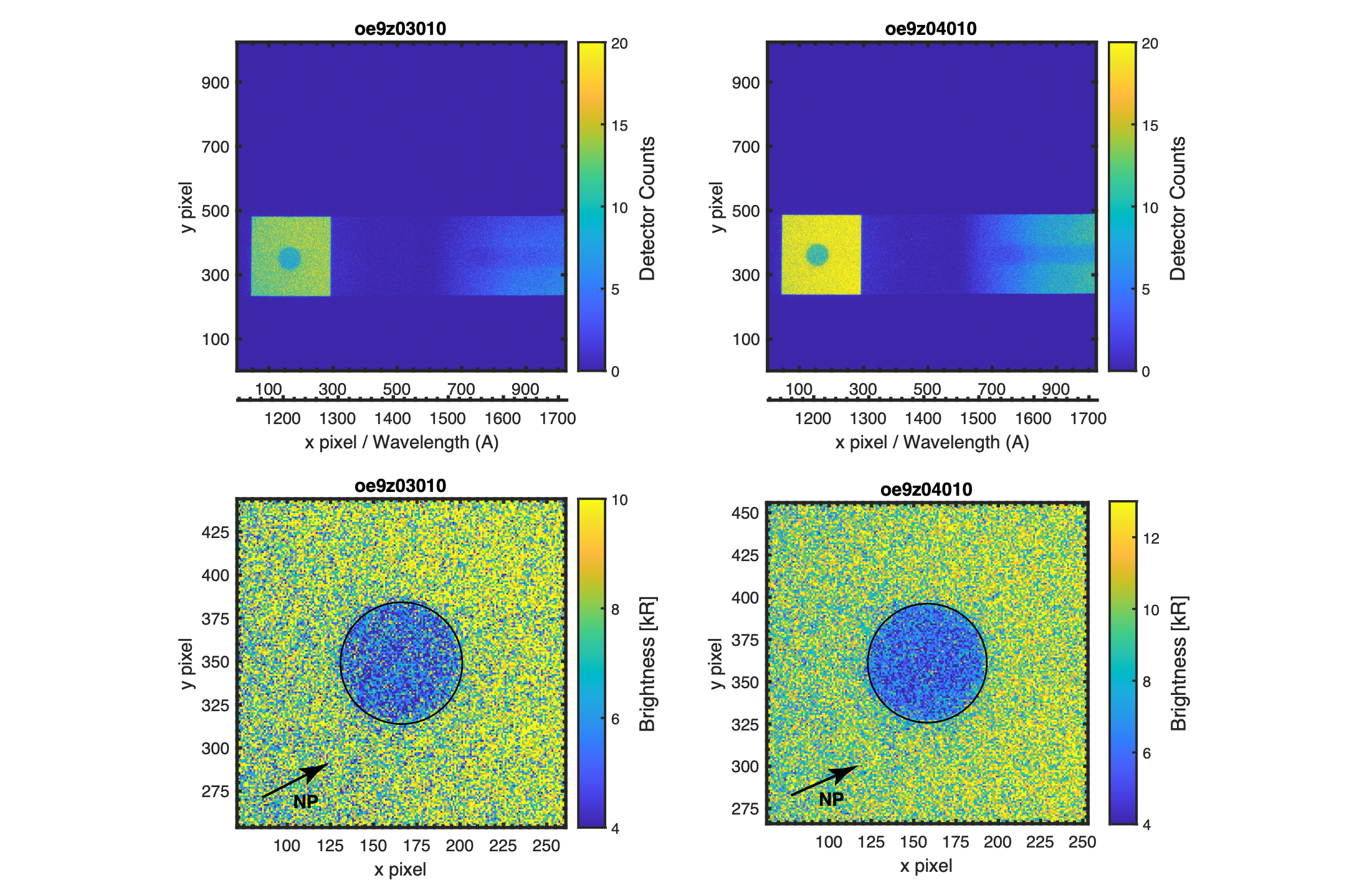
We report results from far-ultraviolet observations by the Hubble Space Telescope of Jupiter’s largest moon Ganymede transiting across the planet’s dayside hemisphere.
Within a targeted campaign on 9 September 2021 two exposures were taken during one transit passage to probe for attenuation of Jupiter’s hydrogen Lyman-α dayglow above the moon limb.
The background dayglow is slightly attenuated over an extended region around Ganymede, with stronger attenuation in the second exposure when Ganymede was near the planet’s center. In the first exposure when the moon was closer to Jupiter’s limb, the effects from the Ganymede corona are hardly detectable, likely because the Jovian Lyman-α dayglow is spectrally broader and less intense at this viewing geometry.
The obtained vertical H column densities of around (1−2)×1012~cm−2 are consistent with previous results. Constraining angular variability around Ganymede’s disk, we derive an upper limit on a local H2O column density of (2−3)×1016~cm−2, such as could arise from outgassing plumes in regions near the observed moon limb.
Lorenz Roth (1), Gregorio Marchesini (1), Tracy M. Becker (2,3), H. Jens Hoeijmakers (4), Philippa M. Molyneux (2), Kurt D. Retherford (2,3), Joachim Saur (5), Shane R. Carberry Mogan (6), Jamey R. Szalay (7) ( (1) Space and Plasma Physics, KTH Royal Institute of Technology, Stockholm, Sweden, (2) Southwest Research Institute, San Antonio, TX, USA, (3) University of Texas at San Antonio, San Antonio, TX, USA, (4) Lund Observatory, Department of Astronomy and Theoretical Physics, Lund University, Lund, Sweden, (5) Universität zu Köln, Köln, Germany, (6) Space Sciences Laboratory, University of California, Berkeley, CA, USA, (7) Department of Astrophysical Sciences, Princeton University, Princeton, NJ, USA)
Subjects: Earth and Planetary Astrophysics (astro-ph.EP); Space Physics (physics.space-ph)
Cite as: arXiv:2301.05583 [astro-ph.EP] (or arXiv:2301.05583v1 [astro-ph.EP] for this version)
https://doi.org/10.48550/arXiv.2301.05583
Focus to learn more
Submission history
From: Lorenz Roth
[v1] Fri, 13 Jan 2023 14:42:16 UTC (2,917 KB)
https://arxiv.org/abs/2301.05583
Astrobiology,


